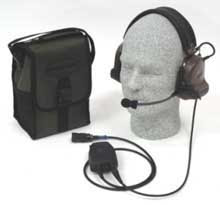What everyone now calls Wi-Fi is based on a technical standard called IEEE 802.11b, which in 1999 defined how a wireless network would operate so all devices on it could actually communicate. The 802.11b standard supported connections speeds of up to 11Mbps, though typical connections run at 1Mbps. Then came 802.11g
in 2003, a faster version of 802.11b that boosted speeds to a maximum of 54Mbps (2Mbps to 5Mbps is a more typical range of actual connection speeds) while also letting 802.11b devices work at their old speeds on the same network.
802.11n: The Faster Future
But because nothing is ever fast enough, the IEEE — the Institute for Electrical and Electronics Engineers, a standards body — has been working for several years on something even faster: 802.11n, which could run as fast as 540Mbps, with typical connection speeds of 100Mbps or more. The final 802.11n specification is expected in mid-2007, with products in 2008.
To achieve these projected speeds, 802.11n devices will use more of the radio spectrum than 802.11b/g devices do, and would actually use multiple channels (in a technique called MIMO) simultaneously. This could make it harder to have multiple networks overlapping in the same area, but it would also make wireless networking as fast as wired networking.
The 802.11n proposal would continue to let 802.11b/g devices run over it, for backward compatibility. And it would also let 802.11a devices — these run at the same speed of 802.11g but use a different, less crowded part of the radio spectrum — run over it. That means that 802.11n devices could use both the 2.4GHz spectrum of 802.11b/g and the 5GHz spectrum of 802.11a, giving it a potential way to avoid interference with other networks in the crowded 2.4GHz space.
The 802.11n proposal would also double the range of a wireless network from today’s typical 100 to 300 feet. Some vendors suggest that the range could be four times today’s typical range under ideal circumstances (flat areas with no walls or other objects in the way).
Jumping the Gun
But wait. There are already “n” products on the market labeled “pre-N” or “draft N.” How can that be?
Manufacturers of wireless devices have a long history of jumping the gun when it comes to new standards. Even before the 802.11b standard was finalized, some vendors — mainly those selling to the consumer market, rather than to the standards-conscious enterprise market — were selling “draft b” products using early drafts of the standards, a gamble meant to attract customers before the competitors got them. If the standard changed during the approval process, the vendors would typically have a software update for their devices to make them compatible, though sometimes this update strategy fell short, leaving customers with an incompatible device.
Many vendors did the same “draft” approach again before the 802.11g standard was finalized. And now they’re doing it with 802.11n.
The difference now: The 802.11n standard has taken much longer to ratify than expected, so some “draft n” products will have been available for two years before the actual standard is completed, making compatibility an open question.
This proliferation of “draft” products carries two risks. One is that the equipment bought today will not be fully compatible with the final 802.11n standard. The other is that “draft” products typically work only with “draft” products from the same vendor, so you can’t mix and match products from multiple vendors based on price or availability. (However, if these “draft” products promise compatibility with standard 802.11b/g devices, you can use other vendors’ 802.11b/g products with the “draft” product.)
Until the final 802.11n standard is approved and products are designed from it, anything you buy today carries one of those risks. When the standard is approved, you’ll see a flood of products available that can confidently deliver on the 802.11n promise.
Thursday, January 8, 2009
Next-Gen Wifi: 802.11n
Subscribe to:
Post Comments (Atom)






No comments:
Post a Comment